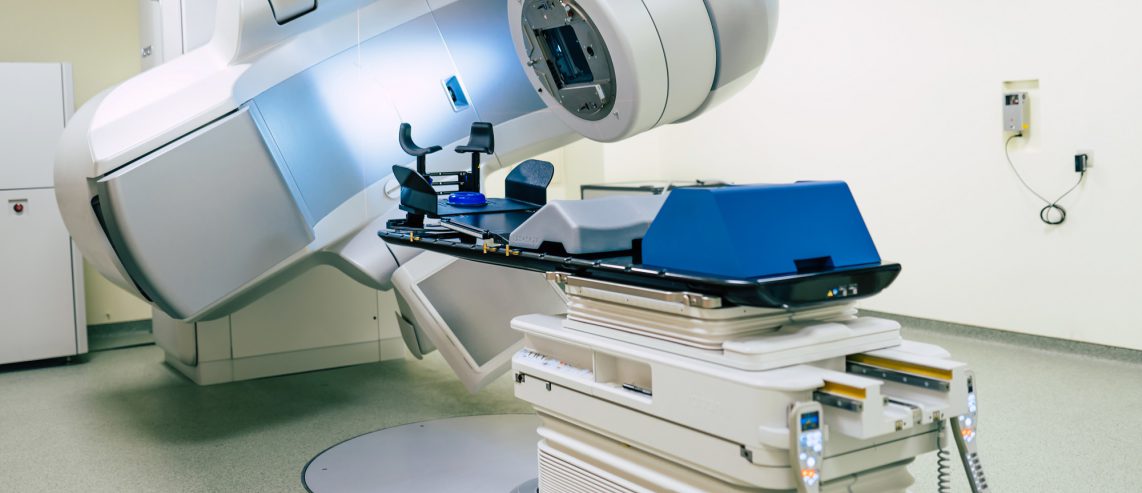After two surgeries for prostate cancer, Don “Wiz” Wisniewski had one final step of treatment. He underwent radiation therapy at UPMC Hillman Cancer Center at UPMC Passavant–McCandless to kill returning cancer cells.
He credits the technology and expert care he received from doctors, nurses, and staff for a good experience and positive results.
“I’ve always been conscientious about my health,” says Wiz, 72, of Gibsonia. “I’ especially glad I kept my yearly urologist appointment in 2019.”
A routine blood test at that appointment showed Wiz’s prostate-specific antigen (PSA) was rising — an indicator of possible prostate cancer.
After a biopsy confirmed cancer, Wiz had surgery at UPMC Passavant to remove his prostate gland.
In November 2022, tests showed Wiz’s PSA levels were rising again. He had robotic surgery to remove lymph nodes near his tailbone.
Sometimes, a few cancer cells remain after surgery. They can be difficult to find on a scan until they grow a bit. When cancer cells appeared again in early 2023, Wiz’s doctors consulted with a radiation oncologist at UPMC Hillman at UPMC Passavant.
Based on his history, the doctor recommended that Wiz undergo pelvic radiation. Radiation therapy can treat a broad area to reach cancerous cells without damaging the surrounding organs. A positron emission tomography (PET) scan identified where to direct the radiation.
“At first, I was nervous about getting radiation,” Wiz says. “But my doctor explained the process clearly, and I understood what was going to happen and why. I thought, ‘OK, I can do this.'”
Never Miss a Beat!
Subscribe to Our HealthBeat Newsletter!
Thank you for subscribing!
You can now select the specific newsletters you'd like to receive.
You are already subscribed.
Subscribe to more newsletters in our email preference center.
Sorry, an error occurred. Please try again later.
Get Healthy Tips Sent to Your Phone!
Radiation Therapy: How It Works
Tumor cells are more sensitive to radiation than normal cells. Radiation therapy can kill abnormal cancer cells or damage them beyond repair so they can no longer spread.
Wiz received external beam radiation therapy through a linear accelerator, or LINAC. The LINAC is a specialized device that delivers a beam of radiation into the body to treat the affected area.
“Imagine a bicycle wheel,” says Heath Skinner, MD, chair and medical director, Radiation Oncology, UPMC Hillman. “In the center of the wheel, you have the hub — where the energy beam is focused. Around the hub are many spokes. The spokes spread a low dose of energy around the hub to also treat the surrounding areas.”
Each treatment adds a little more radiation, augmenting the overall effect.
“Think of the treatments as a piggy bank you had when you were a kid,” Dr. Skinner says. “You drop a penny in the bank every day, and as the days go by, your pennies add up.”
This daily application — like a penny a day — of low-dose radiation through the LINAC adds to the cumulative dose needed to kill the cancer.
Wiz’s Plan of Action
“I was prescribed one radiation therapy session, which totals 38 individual treatments,” Wiz says.
He went to UPMC Passavant-McCandless for treatment every weekday morning for just over seven weeks in April and May 2023.
“I’m a little claustrophobic and was worried when I went in the first time,” Wiz says. “I was relieved when I saw how it actually worked. I’d go into the treatment room and settle on the table. The radiation technician then positioned the LINAC, and the machine moved around the table.”
Wiz received hormone therapy in conjunction with radiation.
“With hormone-sensitive prostate cancer, cancer cells need testosterone to grow,” Dr. Skinner says. “Hormone therapy represses the production of testosterone to stop the growth of cancer cells.
“We also want to minimize the side effects of radiation therapy as much as possible. We can’t promise zero side effects for all types of radiation, but that’s what we’re aiming for.”
Besides fatigue, patients usually experience few side effects from radiation therapy for prostate cancer.
“I actually played nine holes of golf every Wednesday and worked part-time while I was going through radiation,” Wiz says. “I stayed busy but didn’t do a lot of heavy lifting. I slept more and went to bed earlier.”
Exceptional Support
Wiz says he’s grateful for the exceptional support he received throughout his treatment at UPMC Passavant.
“I can’t say enough about the support and care I got every day — from the doctors, radiation therapy nurses, and techs to the front desk receptionists who knew me by name when I walked in,” Wiz says. “There was always someone to answer questions and help me through things. It was reassuring to know they were watching out for me every step of the way.”
They also celebrated with him when he finished his final treatment, he adds.
“The nurses and staff were there to congratulate me: ‘You’re done! Ring the bell to celebrate!'” Wiz says. “My wife gave me a hug. All the nurses told me how happy they were for me. It was a very moving experience.”
Today, Wiz is back to his busy life in retirement. He works with his nonprofit to build and repair houses pro bono in West Virginia and also has a part-time job at a local building supply store. He also enjoys attending Pirates games with his wife and getting out on the golf course.
“Great people work at UPMC Passavant,” Wiz says. “I’ve only had good experiences with UPMC — I’m so glad I chose them.”
Visit the UPMC Hillman website to find a cancer provider near you.
About UPMC Hillman Cancer Center
When you are facing cancer, you need the best care possible. UPMC Hillman Cancer Center provides world-class cancer care, from diagnosis to treatment, to help you in your cancer battle. We are the only comprehensive cancer center in our region, as designated by the National Cancer Institute. We have more than 70 locations throughout Pennsylvania, Ohio, and New York, with more than 200 oncologists – making it easier for you to find world-class care close to home. Our internationally renowned research team is striving to find new advances in prevention, detection, and treatment. Most of all, we are here for you. Our patient-first approach aims to provide you and your loved ones the care and support you need. To find a provider near you, visit our website.

